March 17-31, 2007
Work from March 3-14 is on another page
there is no escaping that all of us who live in britain - whatever the
colour of our skin or our personal history - are now benefitting from the
proceeds of the trafficking of african people and their forced labour in
our colonies over around four centuries. fortunes made from slavery helped
to build many of the institutions from which we still benefit, including
our many of our great galleries and museums. slavery founded many of our
banks and breweries and other great industries, and made britain a wealthy
nation.
but it is also true that the same wealthy elite that treated africans so
callously exploited the poor in britain. my ancestors were thrown off their
land and probably some were imprisoned for their religious beliefs by these
same elites. almost certainly my forebears were a part of the movement that
campaigned against slavery and called for and end to the trade in human
beings, although equally certainly they had little or no political power
at the time, and probably no vote.
of course that in no way diminishes the horror of the trade, but it does
colour my personal attitude to the celebrations of the 200th anniversary
of the abolition. the abolition movement was an important turning point
in the history of our empire and the world leading to the act banning the
trade in people and later in 1833 the abolition of slavery throughout the
british empire. the abolition movement changed britain from being a country
that enslaved millions in its own colonies to one that opposed slavery worldwide.
slavery of course still exists, even in britain, and we still need to oppose
it in all its forms. much of present day slavery here only flourishes because
of our current immigration policies and their implementation, which makes
many immigrants illegal, and impoverishes them, denying them human rights
or making them afraid to claim them.
for the 200th anniversary of the passing of the slave trade act on 25 march,
2007, i went to clapham, the spiritual and physical home of the abolition
movement, where the london borough of lambeth had organised a commemoration
walk. this started at holy trinity church, where the clapham sect at the
centre of the movement, including william wilberforce, granville sharp,
john and henry thornton, john venn, zachary macaulay and others.
steve martin, our guide for the walk emphasized that clapham was also home
to many who had made fortunes from the trade and opposed the abolition,
with both sides worshipping in the same parish church. nearby, at 5. the
pavement, now occuped by an 'evans' shop, an lcc plaque marks the home of
zachary macaulay, and also of his more famous son, lord macaulay.
zachary was a former plantation manager in jamaica and governor of sierra
leone who had become an abolitionist. as a part of a project to return freed
africans to sierra leone he brought 21 boys and 4 girls back from sierra
leone and set up an african academy in clapham to educate them to run the
country. the walk took us to two possible sites for this school, as well
as to the nearby church cemetery, as unfortunately many of them died of
measles and were buried there.
down matrimony place we came to wandsworth road, and turned along it to
a former brewery and the pub next door. one local family that had made considerable
fortune from plantations worked by slave labour were the barclays (later
they became abolitionists and freed their slaves much to the anger of other
plantation owners.) when they sold their plantations, the money went into
businesses including breweries and banks. one of the families most prominent
campaigners against abolition was george hibbert, chairman of the west india
dock company, which profited hugely as the slaving ships brought back the
produce of the plantations to london. the hibbert almshouses were built
to house elderly poor residents of clapham by his two daughters.
as we turned back up towards clapham common, steve informed us that the
street along which we walked had been built on what were once the back gardens
of the houses of these wealthy traders in human beings who lived in the
extensive houses facing the common on clapham northside. the tour ended
outside no 29, once the home of george hibbert (robert barclay lived next
door at 31), a couple of hundred yards from holy trinity, where our walk
had started.
more pictures
across the middle of the common is of course a dividing line - between
the london boroughs of lambeth and wandsworth. it would have prolonged our
walk to take in the plaque to wilberforce in broomwood road (and broomfield,
where he lived was demolished in 1904) or to battersea rise, the 'home'
of the clapham sect where he lived earlier with his friend and fellow mp
henry thornton (the hosue was demolished in 1908 despite a campaign and
public appeal to save it because of its connection with the abolition movement.)
i could find no mention of the bicentenary on the london borough of wandsworth
site, although there is a church service at all saints organised by the
local churches on 31 march that the mayor will attend (and one of the bas-reliefs
on the town hall shows wilberforce with the act in his hand, next to macaulay.
rather to my surprise i find wandsworth museum, instead of celebrating its
contribution to abolition, is currently showing a museum of london travelling
show, 'queer is here' which includes "peter marshall's dynamic
black and white photographs capturing a decade of the annual london gay
pride event" - which you can also see on
line on this site.
earlier in the day i'd been at another lambeth event, in the centre of
brixton, outside the tate library. at the end of the clapham walk there
had been a fairly intense argument about whether tate's sugar fortunes had
come, at least in part, from slave labour on brazilian plantations after
the abolition in the british empire.
organised by the brixton society, the commemoration of the abolition took
place next to windrush square and the site of the proposed black cultural
history centre in raleigh hall. it was opened by an african drummer and
singers from the sozo house of praise gospel choir. there were then some
speeches mainly concerned with commemorating the abolition of slavery from
the mayor of lambeth, cllr liz atkinson, and local mp keith hill, and supt
paul wilson for metropolitan police in lambeth.
those present were then invited to plant bulbs in the grass as a permanent
memorial, after which rev stephen sichel of st matthew's with st judes across
the road led prayers.
norma williamson, the treasurer of the brixton society introduced a the
next section celebrating the contribution of those of black afro-caribbean
origin to life and culture in britain now. floella benjamin, obe gave a
very powerful address particularly stressing the need for black kids to
get educated to empower themselves. it was a hard act for derrick anderson,
cbe, lambeth's chief executive, and devon thomas, the chair of brixton business
forum to follow. linda bellos, former leader of the labour group on lambeth
council, rejected by the party as a candidate for a local parliamentary
seat gave another powerful performance, putting the issue strongly into
its political perspective. power isn't just about race, it's also about
class, and gender. the event closed with more fine gospel singing from the
sozo house of praise choir.
more pictures
i went off to have a rest and some lunch, and to take one of my favourite
london strolls by the thames, from vauxhall to battersea. it's a shame that
we still have to go back to the road rather than continuing past the ruins
of battersea power station.
more pictures
the previous day, i covered the anglican church's walk of witness to mark
the abolition. the church of england has much to repent, with many of those
who profited greatly from the ships that transported some 12 million african
people over the years being pillars of the church and supporting it
financially.
when christopher codrington died in 1710 he left his barbados plantations
to its missionary society, who at least at first continued his regime of
forced hard labour, punishment with the lash, iron collar and straight-jacket,
and, at least for some years to brand its enslaved africans across their
chest with the word "society". even though the church claimed
to have made various improvements in conditions, 4 of every 10 africans
bought by the society still died in their first 3 years there in 1740. despite
the efforts of abolitionists, slavery continued until made illegal by the
1833 act, which provide the church with a very large financial reward in
compensation.
it was an aspect that, although not absent from the day was perhaps rather
downplayed, perhaps because it is so distateful. the church of england perhaps
has some way still to travel so far as remembrance is concerned. nowadays
of course the anglican community stretches across the world, with many black
members in africa and the west indies as well as in this country. repentance
certainly was in evidence, but the third r, restoration, was perhaps still
only beginning to focus.
from the opening service in whitehall place, we walked between reminders
of imperial greatness, perhaps reflecting how much the expense of grandeur
of these buldings owes to our exploitation of the colonies and in particular
to the trade in african lives.
along with the main procession were a small group whose journey had started
three weeks earlier in hull, the birthplace of william wilberforce. the
250 mile long march of the abolitionists, taking turns to march in a yoke
and chains, ended in victoria gardens at the buxton memorial fountain erected
in 1865 to mark the emancipation of slavery in the british empire in 1834.
in a short ceremony, their chains were removed by the archbishop of the
west indies.
the main procession stopped for a short ceremony on lambeth bridge, where
a wreath was placed on a boat in the river to remember the 2704 ships that
left the port to carry enslaved africans. the march then continued, supposedly
in a silent remembrance of those who died in the ocean crossings to kennington
park.
i took the tube to stockwell, to meet the second march which had come from
holy trinity, clapham. this was roughly half the size of the main march,
just over 1,000 strong, but considerably shorter on bishops. it was a cold,
slightly damp afternoon with a cutting wind and it was hard to keep warm
at the slow walking pace. some left as the march arrived in kennington park
rather than stand around for the lengthy ceremony of repentance and reconciliation.
i hung it out more or less to the bitter end.
more pictures
spring had officially begun three days earlier, and certainly the weather
then was rather better as i watched the druids carry out their ceremony
on tower hill terrace. it was in some ways impressive, with their white
robes, but rather to staid and measured for my taste. celebrations need
to be done with much more joy. this had more the feeling of a funeral -
despite the white dress.
there was an air of dusty scholarship, of dull victorian scribes trying
to major on gravitas in the order of service, and a sermon of mumbled though
possibly worthy boredom. hard to imagine william blake as chief druid of
this tribe, i'm sure they must have done things differently in his days.
i'm not sure how far back these celebrations go at tower hill. modern druidry
revivied in the eighteenth century, partly as archaeologists re-discovered
sites such as stonehenge and asked themselves what went on there. what relationship
the rites they came up with bear to those of pre-christian times is impossible
to know (though one suspects rather little.)
more pictures
from tower hill i went on a short tour of london demos, calling in briefly
outside zimbabwe house, where they were only just beginning to assemble,
walking past a regular wednesday lunchtime picket outside the reed elsevier
offices on the corner of trafalgar square (they help promote arms fairs),
before finding a group or iranians demonstrating against president mahmoud
ahmadinejad in favour of maryam radjavi and democracy in iran opposite downing
street. in particular they protest against the british government’s
refusal to abide by the ruling of the european court of justice to remove
the people’s mojahedin organization of iran (pmoi) from list of banned
terrorist organisations.
more pictures
meanwhile in parliament square, the peace protest continues. i've just
missed a protestor, caroline, driving her blue rover through the gates unchallenged
into the houses of parliament. when later stopped she claimed she had come
to carry out a citizen's arrest on tony blair. she was released a couple
of hours later without charge, the police apparently wanting to hush up
the massive breach of security.
more pictures
i went away to spend the afternoon in tate britain (not sure what i think
about mark wallinger's recreation of parliament square there, somehow too
sterile and not really like the real thing, but good to raise the issues
in a way that catches the media eye.) then return to the real place to catch
the start of this weeks mass lone demos before rushing off to a meeting.
saturday 17th was a busy day. until around 4 years ago i'd kept pretty
clear of doctors and hospitals, but three weeks in bed there convinced me
that there were a lot of dedicated individuals working inside a sometimes
incredibly inefficient system harrassed by often incompetent managers, civil
servants and politicians. whose latest trick seems to have been to totally
mess up the selection process for doctors in training by implementing an
inadequate computer system and a lack of workforce planning.
selection for medical school in the first place is intense, with many of
our brightest competing for places on the long and hard route to qualification.
its both a personal and a national tragedy if having got through to the
later stages of the process, thousands of junior doctors are likely to find
themselves without a place to continue this august, with the likelihood
too of there being no consultant posts for thousands of registrars in 2010-11.
so this was a demonstration by the cream of our young people - along with
some of their parents and more senior figures in the profession. my rough
estimate of the numbers who came was over 10,000 and the organisers gave
a figure of 12,000. at the end of the march in lincoln's inn fields there
was a short period of farce, as the camden council park worker had locked
the gates, presumably following normal instructions. before going off duty.
eventually someone arrived and cut through the chains.
as well as medical speakers, we also had politicians. although at least
one labour mp got a mention for the help he had given to remedyuk who organised
the protest, only liberal democrat and conservative speakers came. it gave
a great boost to the publicity for the event that the leader of the opposition,
david cameron, mp represented his party, but it wasn't a great treat for
this photographer. i found it very hard to photograph cameron, not because
i wasn't in the right place (i was), not because it was an elbow-fest for
the press (i largely held my own) but simply because i couldn't find a person
there, just a bland exterior. i did my best.
more pictures
several groups were demonstrating in trafalgar square when i called in.
four years on from the invasion of iraq the situation there is dismal. it
is always easy to be right in hindsight, but the majority of the british
people were right at the time of the invasion, and the government held its
telescope firmly to its blind eye of mis-interpreted, faulty and partly
invented intelligence. unfortunately both britain and even more iraq will
suffer for blair's shameful mistake for many years to come.
even those of us who have problems with some animal rights campaigns and
the activities of some of the campaigners find it hard to support the annual
killing of seal pups in canada. there may be an argument for having to control
the numbers of seals, but the way it is carried out is certainly inhumane
and a public relations disaster, with blood staining the ice and clubbed
animals at times being skinned while still conscious. respect for animals
calls for a boycott of canadian seafood products and asks us not to visit
the country as tourists.
a much happier event was taking place in willesden green, where the borough
of brent was celebrating st patrick's day with a parade and cultural activities.
it's great to photograph the people out on the street to celebrate, and
wanting to have their pictures taken, and there was plenty to photograph,
including of course st patrick himself leading the procession, along with
the mayor, kensal green councillor bertha joseph, in her second term as
mayor - she was brent's first african caribbean mayor in 1998. but of course
the real stars of the event were the people of all ages who were taking
part and having a fine time.
after the parade there was time for the culture - in the form of a pint
of guiness in a real irish bar, after which i went to watch the band 'neck'
performing, and the people dancing to their music. it was a fine event,
the band clearly setting out not just to play but to entertain the audience
and doing so in great style.
the official london st patrick's celebrations took place the following
day, sunday 18th, with a large parade led by london mayor ken livingstone,
the irish wolfhound mascot of the london irish rugby club, and some irish
suits, along with the london town cryer and of course st patrick, rather
taller but less colorful than his willesden incarnation.
more pictures
unlike saturday, there was a keen north wind from the arctic coming down
park lane as the parade assembled. after the brent event i found it a little
disappointing; more of a performance than an event. elsewhere the centre
of london was packed with irish celebrations in both trafalgar and leicester
squares, as well as an irish food event in covent garden market which i
visited briefly later in the day. the irish stew smelt good, but there was
little to photograph, and i'd just had a good plate of roast lamb.
sunday was also mothering sunday, the fourth sunday in lent, where in the
middle ages people all went to the 'mother church' or cathedral in their
area and to meet with the rest of their families. now it is largely celebrated
as mother's day. this originated in the usa in 1870 as a call to women and
mothers to unite against war, this soon became a commercial festival when
people sent cards and flowers to their mothers. americans celebrate it in
early may.
so it seemed to be a good idea to visit london's largest flower market,
which runs every sunday morning, opening for sales at 8 am and packing up
around 2pm. the redoubtable victorian philanthropist baroness angela burdett
coutts set up columbia market in 1864 in a market square, also building
flats and shops. it was intended to provide cheap food from the ports and
countryside of east anglia to the east end of london, with a direct rail
link from the nearby line, but this was never built.
the market square is now modern flats - the traders preferred to sell in
columbia road itself, and over the years many traders moved out to nearby
markets including petticoat lane and brick lane. with a growing jewish population
in the area, the market moved to sunday trading, and the weekday market
disappeared. in 1927, the introduction of licensing schemes for trader established
it as a market for flowers and plants, and other traders were gradually
moved elsewhere. After a period when there was little trading except at
the peak seasons, the council revitalised the market in the 1960s by withdrawing
licences from anyone who didn't use them on a regular basis.
more pictures
the head of the river race is an annual event for 'eights' - boats with
eight oarsmen and an cox - rowed over the same course as the oxford and
cambridge university boat race, but in the opposite direction. it takes
place a little after high tide, so that the river is flowing fast in the
direction the boats are travelling.
it was first rowed in 1926 when 21 boats took part, but has become very
popular and a limit has been set at 420 entries for safety reasons. the
race is a time trial, with boats setting off at 10 second intervals over
the four and a quarter mile course. boats that competed last year start
the race in the order of last year's times (fastest first) followed by any
new entrants in alphabetical order.
this is thought to be the largest single continuous rowing event in the
world, and the thames does look very crowded at times. there is a marshalling
area upstream of the start, and boats line up along both banks of the river
before being allowed to proceed to this.
although it was a sunny day, there was a strong and biting cold north-east
wind, making conditions on the river unpleasant. the race started a few
minutes late, but only the first 40 boats had started before proceedings
ground to a halt. a few minutes later, launches came down to inform the
waiting rowers that the race had been abandoned. although the reach through
mortlake was relatively smooth, beyond barnes bridge the river was very
choppy, and half a dozen boats had become waterlogged. of the 40 that started,
only 29 made the finish line, with cambridge university boat club (11) putting
in the fastest time, ahead of last year's winners leander (1).
Work on another page from March 3-14, 2007
january
february
march
april
may
june
july
august
september
october
november
december
2008
2007
2006
2005
2004
2003
2002
2001
2000
1999
some of my work gets put into nice organised websites.
this isn't meant to be like that, but you can see some of the
rest at
london pictures
londons industrial history
and you can read what I think about photography at
>Re:PHOTO
All pictures on this section of the site
are © Peter Marshall 2007;
to buy prints or for permission to reproduce pictures or to comment on this
site, or for any other questions,
contact
me
your comments may be added to the site - or
not.
Payment may be waived for acceptable non-profit uses.
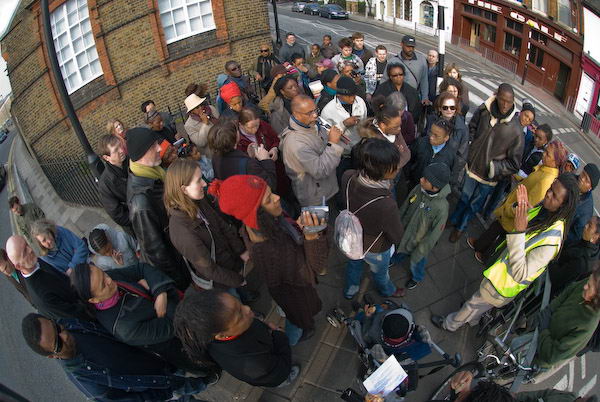



 Planting bulbs
Planting bulbs

 Those
who have walked from Hull embrace after release from their chains
Those
who have walked from Hull embrace after release from their chains 


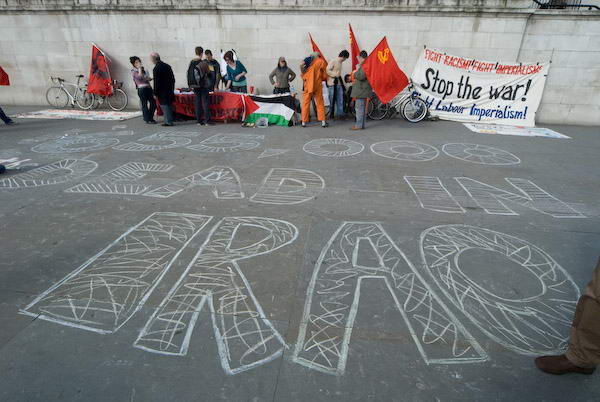
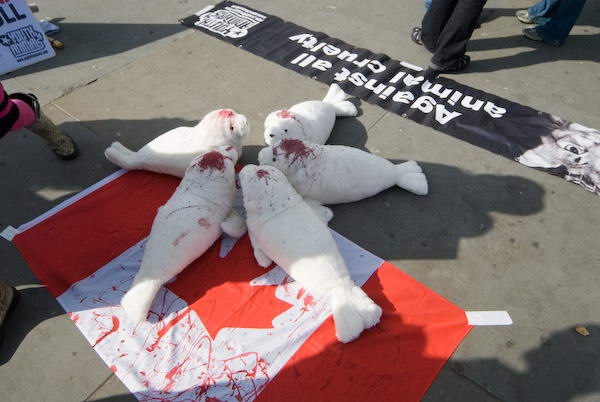
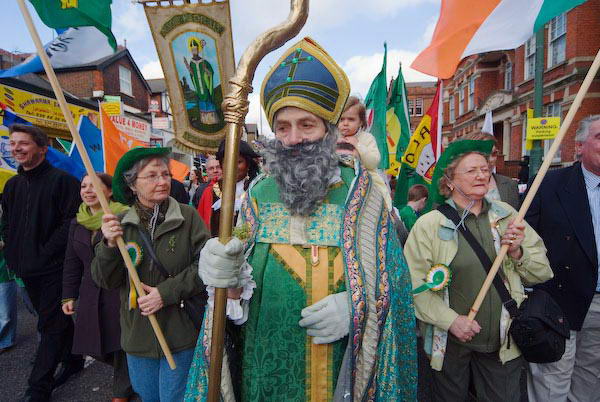

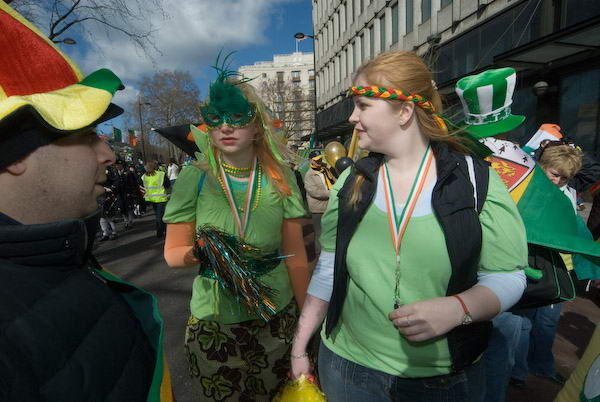 There
were Irish people in the parade
There
were Irish people in the parade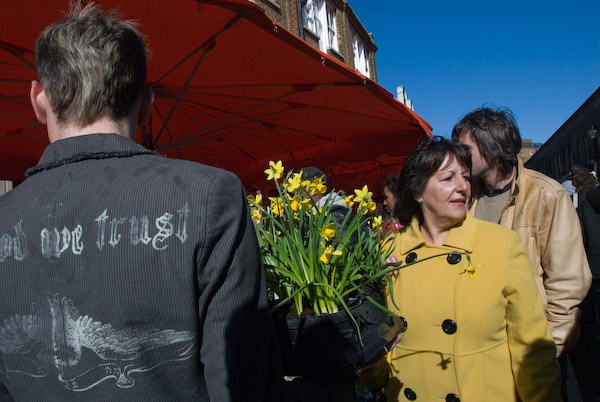 more
pictures
more
pictures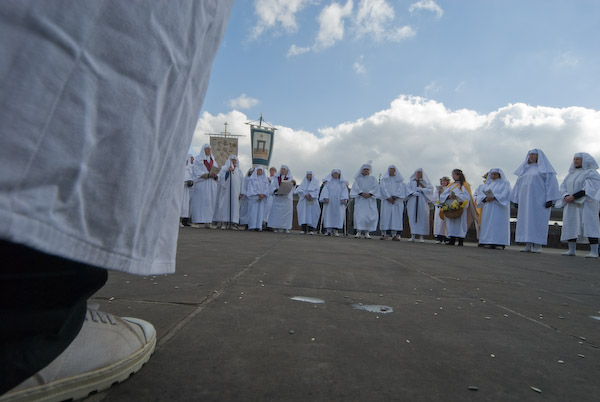 The
circle of druids at Tower Hill
The
circle of druids at Tower Hill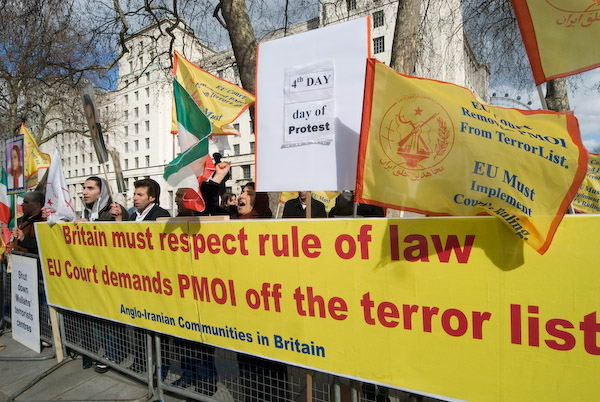

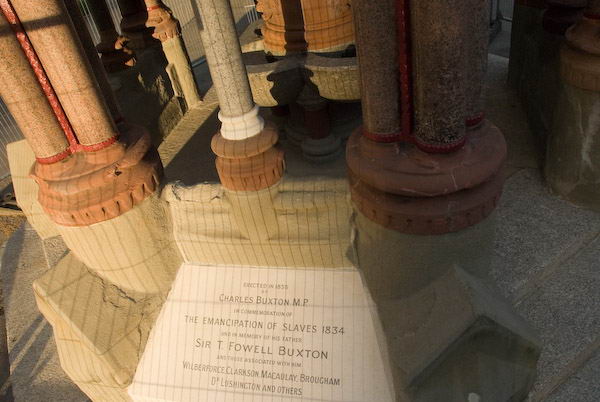 The
Buxton Memorial in Victoria Gardens, cleaned up ready for the 200th anniversary
of the aboliton of the slave trade.
The
Buxton Memorial in Victoria Gardens, cleaned up ready for the 200th anniversary
of the aboliton of the slave trade.